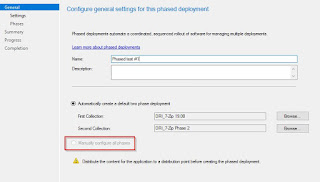Download an appx application locally to be used in SCCM CB

Download an appx application locally to be used in SCCM CB I got some inspiration to this blogpost from: http://woshub.com/how-to-download-appx-installation-file-for-any-windows-store-app/ Here is an easy way to download an appx from Microsoft store. This can be used to add an appx application in SCCM CB and the distribute it to devices. Why all this hazzle, when you can get the app from the store? Quite simple: our company policy don't allow app update over the Internet Requirement: The application must be installed, to be able to copy the download link. Next: Search for the application and chose share. (Sorry for the danish. Lommeregner = Calculator) In the share dialog box, select copy link Browse to this URL: https://store.rg-adguard.net/ and paste the URL into the textbox Find lines with the version number you would like to download and place them all in the same folder. Also download the files for x86 & x64 or an easier way...

